Five Aussie-designed low emissions products that could save the world
From solar windows to a flame-free barbecue, here are five Aussie-made low-emission innovations that could help save the world.
The Victa mower, the black box flight recorder and the clothes hoist are rightly revered in the pantheon of Aussie-designed products, but today’s generation of geniuses are increasingly focused on the need for low-emissions inventions.
From a better battery to a burn-free barbecue, here are five clean Aussie-made energy innovations fresh to market, or coming soon.
PRINTED SOLAR
Solar power usually involves big bulky metal panels, but Kardinia Energy’s alternative is lightweight, cheap and produced in a matter of minutes. Looking a bit like the negatives we used to get in a packet of photos, the printed solar strips invented by Professor Paul Dastoor at the University of Newcastle may be lower in efficiency than traditional solar, but they’re infinitely more flexible.
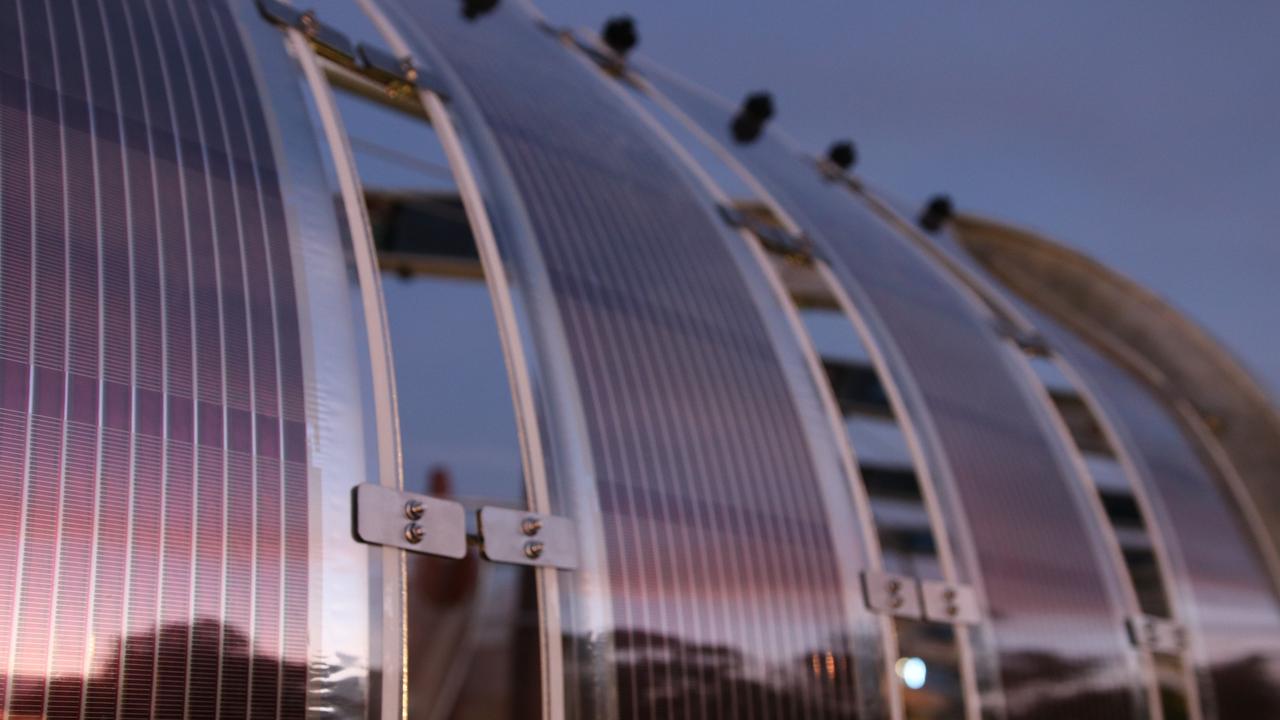
“Printed solar is a very different way of looking at solar energy,” Kardinia Energy’s Anthony Letmon said.
“The technology can go on limitless areas, essentially – anywhere the light hits. We can cover vast areas of application where ultimately you’re unable to use any other application.”
Case in point: warehouse roofs that can’t take the weight of traditional solar panels.
“We could lay out printed solar right across every warehouse right across Australia, and not only don’t we need to be directly angled at the sun, we can go on to walls as well,” Mr Letmon said.
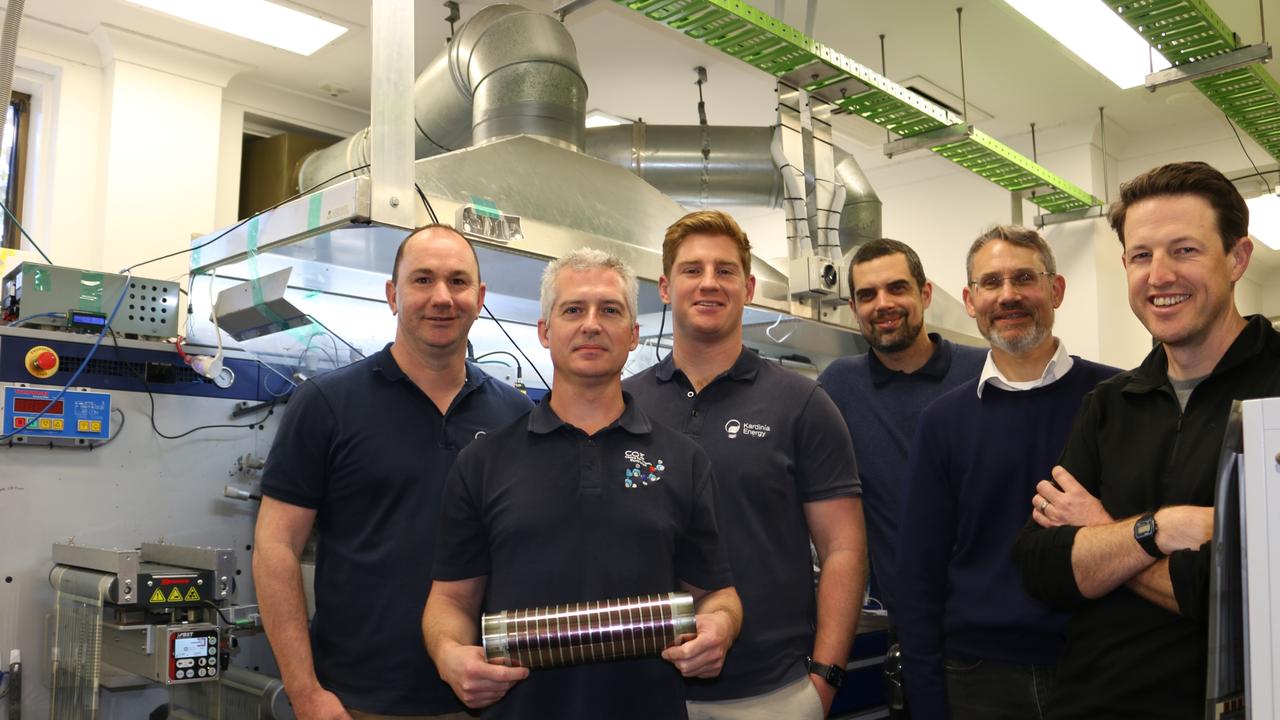
The product has an expected lifespan of about five years, but using fully recyclable plastics and inks, nothing need go to waste.
Interest from around the world has been intense, Mr Letmon said, with inquiries from more than 100 countries in just the past 12 months.
“If you look at the way the world is headed, we need every solution we can find,” he said.
CLIMATE-FRIENDLY AIR CON
A rapidly warming world will need to turn the airconditioning up – but those same systems require massive amounts of power, creating more greenhouse emissions, which in turn pushes temperatures up even higher.
Australian company Conry Tech is promising to shake up the industry with a radically different approach to airconditioning. Its BullAnt system (named because bull ants are both small and tough) will allow building managers to pump cool or warm air only into those parts of a floor that need it.
Co-founder and chief executive Sam Ringwaldt said the system could prevent an average-size commercial building from emitting 2000 tons of greenhouse gas emissions per year – and take 40 to 50 per cent off the owner’s power bill.
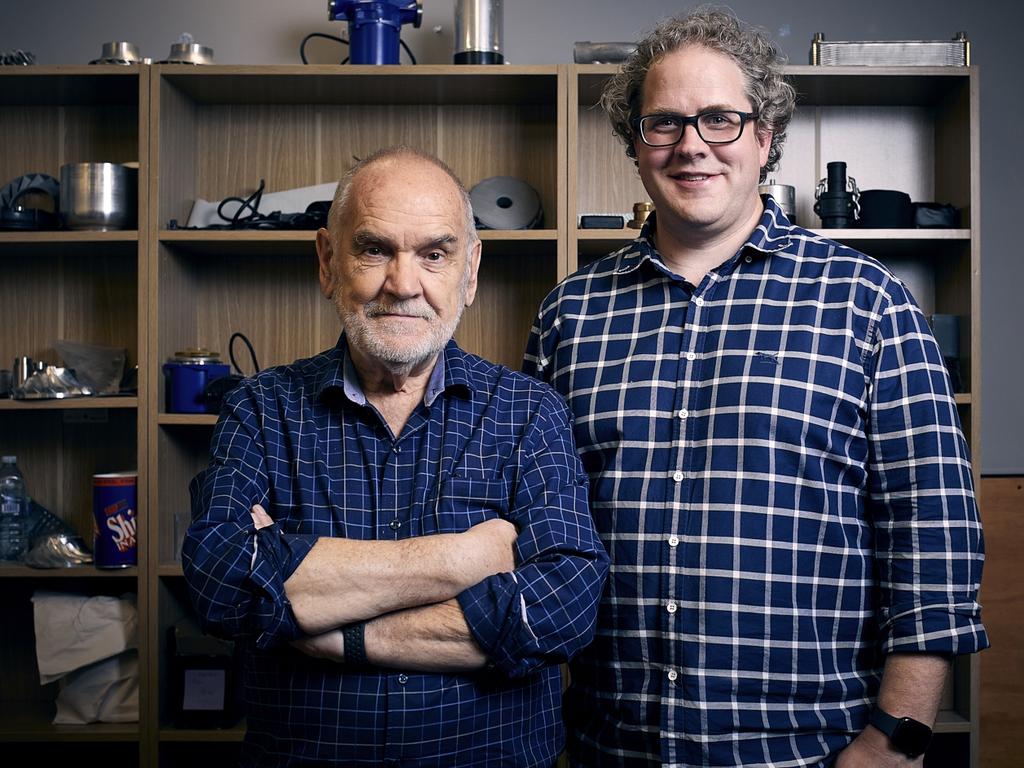
“Depending on the size of the building, that could be a million dollars a year, so it’s fairly significant,” he said.
Besides being distributed rather than centralised in nature, the BullAnt system will also draw power when it’s more likely to be renewable, and store it for later – reducing the strain that airconditioning units can have on the grid.
Mr Ringwaldt said the first BullAnt pilot systems will be in operation soon, with the product available commercially around mid-2024.
Hotels, universities, government and commercial buildings are the likely first customers – many of whom will be attracted by the double whammy of lower costs and lower emissions.
Commercial buildings are the company’s focus, but a version of the BullAnt for residential homes could be in the pipeline in a few years, Mr Ringwaldt said.
ZERO EMISSIONS BARBECUE
Want your snags without the carbon snag? Feel like cooking a meal but not the planet? Lavo’s prototype hydrogen barbecue promises zero-emissions meals, and might allay fears that the move away from gas could kill off the great Aussie barbie.
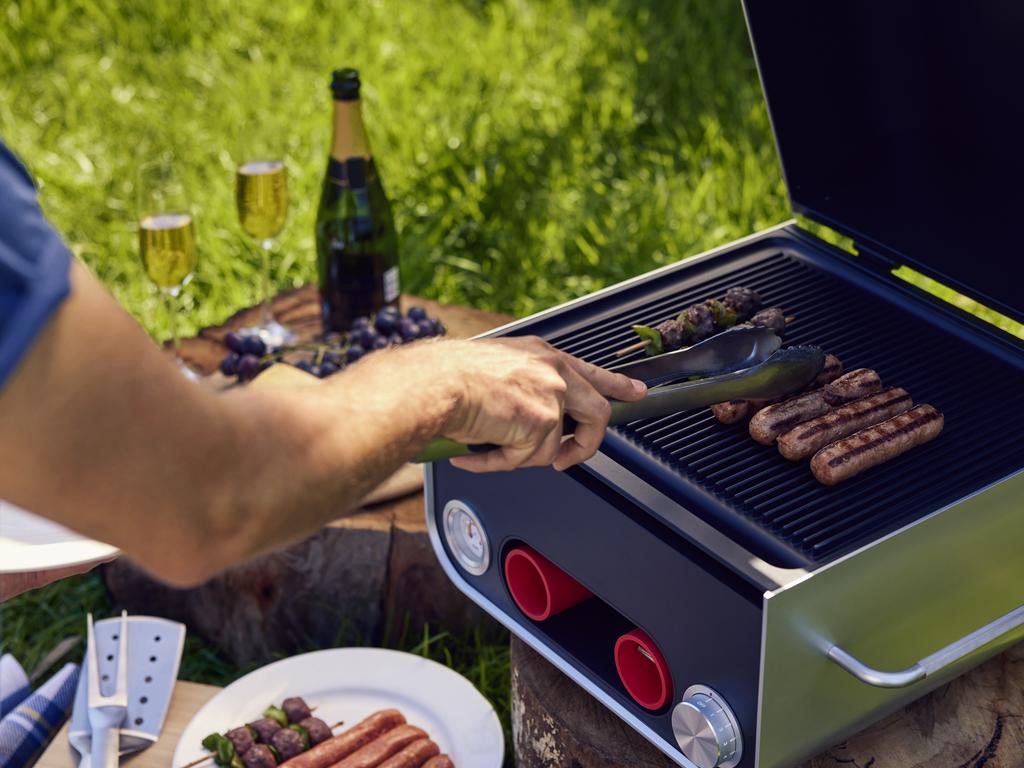
The company’s chief operating officer Jacques Markgraaff describes the prototype as an “amazing piece of technology” that uses a proprietary catalytic bed to convert solid-state hydrogen into controllable, flame-free heat and steam.
For many, it might also provide a tasty first way to experience hydrogen as an energy source, showcasing its potential for other everyday uses.
While the product is probably still a few years away from commercial availability, Mr Markgraaff envisages it will retail for under $1000 – a price that innovators and early adopters will likely pay.

“The hydrogen barbecue could be viable today, but we need to have the infrastructure in place, the home system to generate the fuel, or the local retailer where you can go and pick up canisters. There’s a couple of steps in place before we can launch the barbecue, because otherwise people can’t fuel the thing,” Mr Markgraaff said.
“Once we have solar farms generating green hydrogen, we’re off to the races, so to speak.”
SOLAR WINDOWS
Windows let in the light, but what if they were also able to use that light to generate electricity? It’s already being done at very low levels of efficiency, but a team from Monash University and the CSIRO have managed to increase the power conversion five-fold.
Using solar cells constructed from the mineral perovskite, the team led by Professor Jacek Jasieniak have generated enough electricity to run simple appliances, but they’re thinking big.
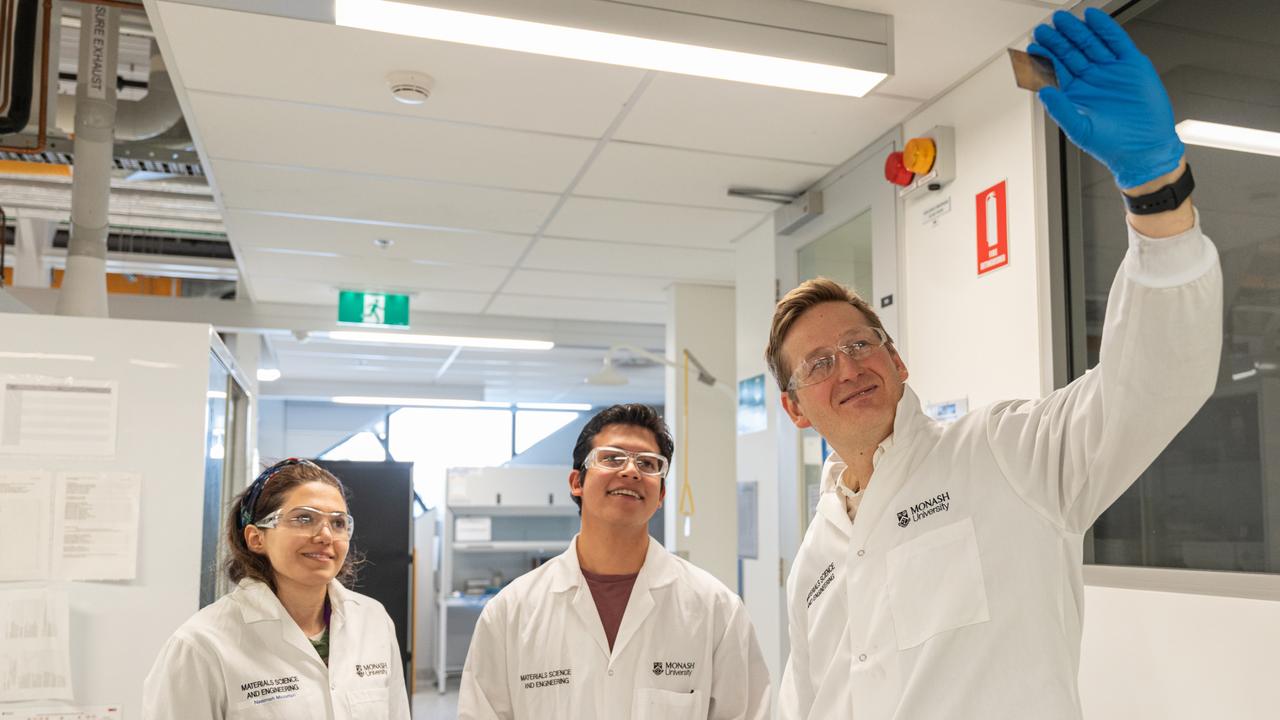
“When it’s scaled, a version of this technology over a window pane, say two metres by one metre, could be producing 200 to 300 watts an hour. In a day that would probably produce about a kilowatt of energy, if it was installed in the right spot,” Prof Jasieniak said.
His team’s breakthrough, which netted them a nomination for a Eureka Science Prize this year, brings the commercial development of solar windows much closer to reality.
But first the team has to solve what the professor calls the technology’s achilles heel: a mismatch between the life of an average window (30 to 40 years) and the durability of the solar cells (currently several thousand hours).
“The efficiency is there now, but the stability is the main drawback,” Prof Jasieniak said. “Once those two things can be demonstrated, I think we will be market ready. When would that happen? I’m an optimist and I think it could be achievable over the next five to 10 years if we have the right structure to support that translation.”
BETTER BATTERIES
Energy storage technology is ever-evolving, but many believe a lithium-silicon-sulphur battery developed by Professor Thomas Maschmeyer at the University of Sydney could be a total game-changer, even opening up the potential for electric aviation. Now acquired by Australian company Gelion, the batteries are cheaper, safer (less prone to catching fire or blowing up), lighter, better performing, and made up of minerals that are in plentiful supply.
The company was further boosted earlier this year with the acquisition of 650 energy storage patents from the UK company Johnson Matthey; the merging of the two bodies of research “fitted in together like a jigsaw puzzle,” according to chief executive officer John Wood.
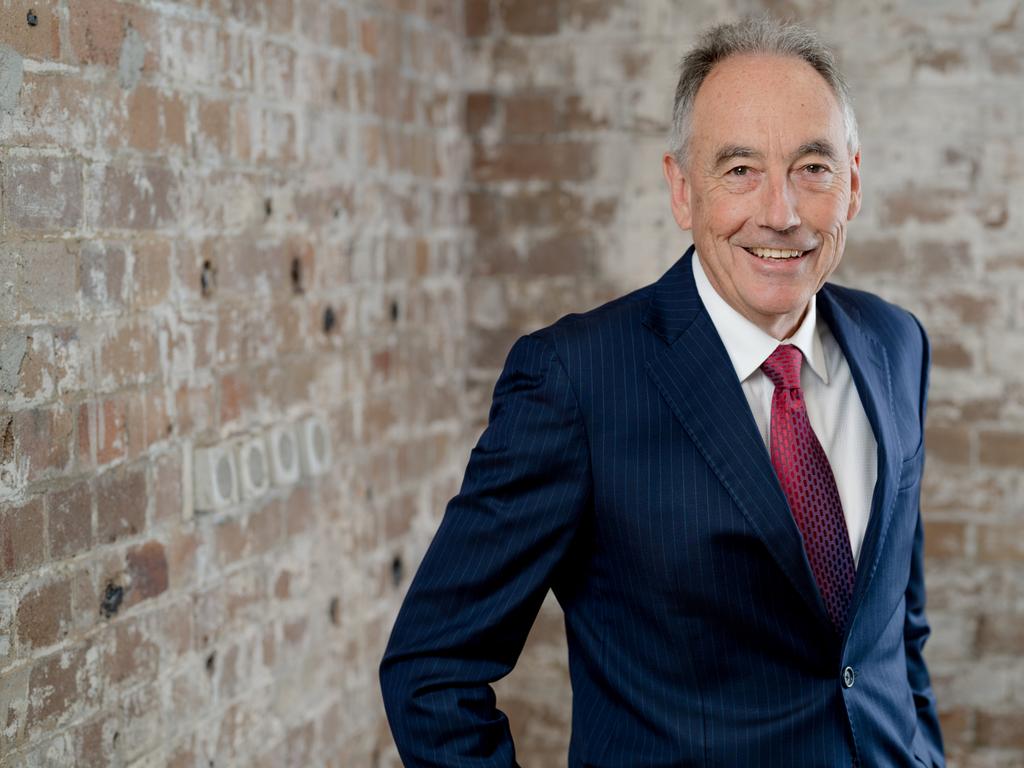
“Our hope is that lithium-silicon-sulphur becomes the next generation [of battery technology] progressively, not tomorrow, and that it makes a huge contribution to the energy storage world,” Mr Wood said. “It has the potential to do something really special for Australia.”
Gelion expects to enter the global supply chain next year.
Originally published as Five Aussie-designed low emissions products that could save the world




